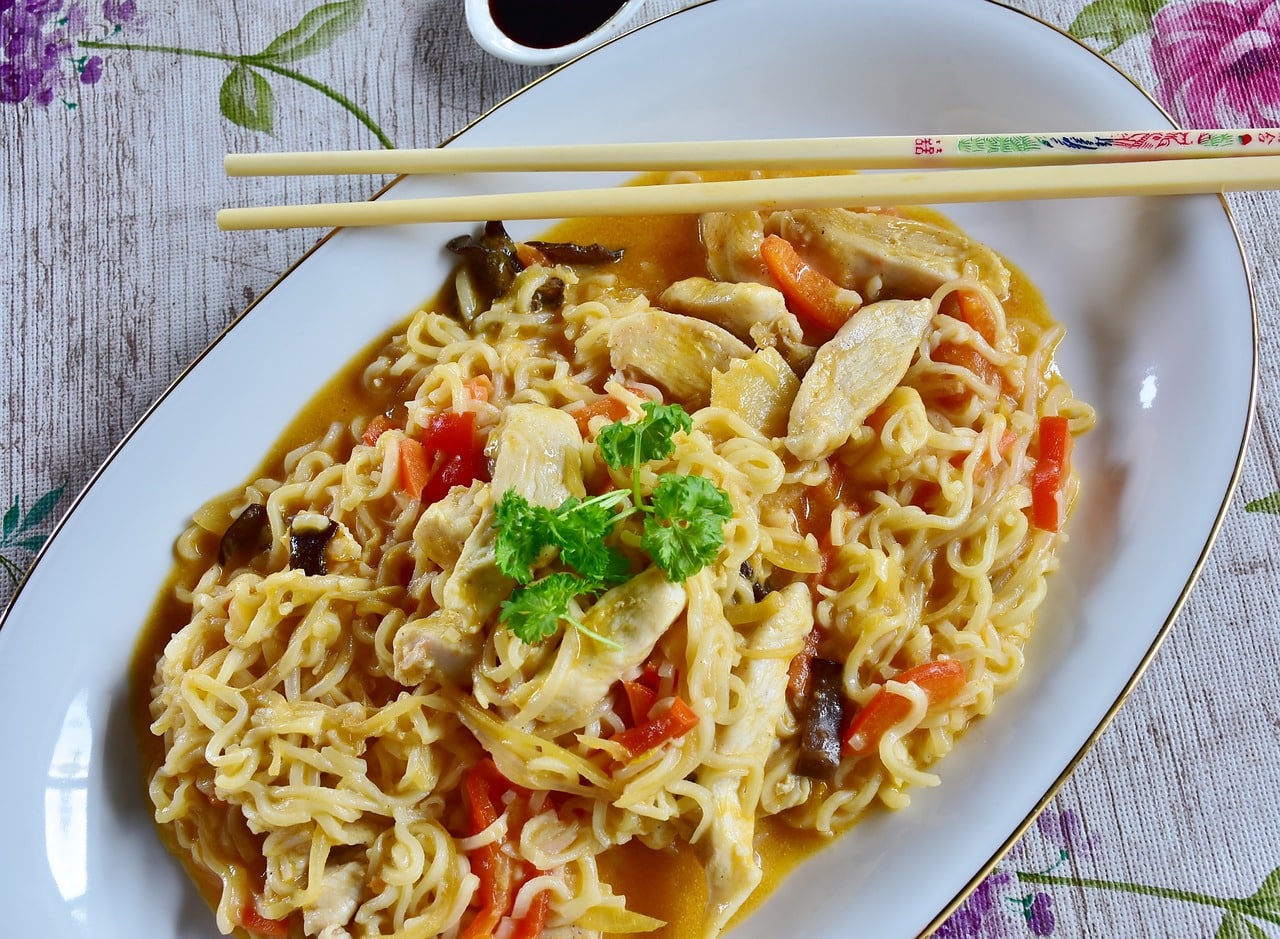The art of wok cooking

Millennia-old techniques, the dance-like rhythm of a stir, the sizzle of ingredients hitting hot oil; wok cooking is a culinary performance that both tantalizes the taste buds and captivates the senses. The atmosphere of a Chinese kitchen, with the wok’s "wok hei" or "breath of the wok", permeating the air is one of the most intoxicating experiences for food enthusiasts. Whether you are a seasoned cook or a novice in the kitchen, the art of wok cooking can elevate your culinary skills to new heights. In this article, we delve into the world of wok cooking, exploring techniques, recipes, and the science behind this fascinating cooking method.
The Wok: More than a Pan
The wok, an integral part of Chinese culinary culture, is not just a cooking utensil but a symbol of the harmony of flavors. Its round-bottom design facilitates the quick tossing and turning of ingredients, while the high heat maintained during cooking allows for the unique flavor of wok hei to develop.
A découvrir également : Cooking protein-rich vegan dishes
Wok cooking is essentially about stir-frying, a process where ingredients are seared quickly in oil at a high heat. The key to mastering wok cooking lies in understanding heat control and the order of adding ingredients, as each ingredient cooks at a different time and temperature. Having your ingredients prepped and ready to go before you even turn on the heat is crucial.
Stir-Frying: A Dance of Flavors
When it comes to wok cooking, stir-frying is the core technique. As food writer and culinary consultant Kenji López-Alt explains in his book, "The Food Lab," the stir fry method is all about the constant, brisk movement of ingredients. This not only prevents them from burning but also ensures they cook evenly.
En parallèle : Modern Australian cuisine
Stir-frying begins with heating the wok until it’s smoking hot. Then you add the oil, followed by aromatics such as garlic, ginger, or scallions. These ingredients are quickly fried until fragrant, setting the flavor base for the dish. The main ingredients are then added, starting with the ones that take the longest to cook. The food is constantly stirred and tossed, using the wok’s unique shape to keep the ingredients in motion.
The Technique: Managing Heat
Heat management is fundamental in wok cooking. The wok needs to be heated until it starts smoking, which indicates that it has reached the optimal temperature. After adding the oil, it should shimmer without smoking right away, signaling the correct temperature to add your ingredients.
Managing the heat levels throughout the stir-frying process is also crucial. If the wok becomes too hot, ingredients can burn. Conversely, if it’s not hot enough, ingredients can end up boiling in their juices rather than frying. Constantly adjusting the heat and moving the ingredients around the wok can mitigate these potential issues.
Wok Hei: The Breath of the Wok
"Wok hei", a Cantonese phrase that translates to "breath of the wok", is a distinctive flavor produced by the wok during high heat cooking. It’s often described as a smoky, slightly charred flavor that permeates stir-fried dishes, imbuing them with a taste that can’t be replicated with other cooking methods.
Achieving wok hei is a testament to the cook’s skill in managing heat and timing, with both factors needing to be perfectly balanced. It’s an elusive flavor profile that takes time and practice to master, but when achieved, it transforms simple ingredients into culinary masterpieces.
The Ingredients: Choosing and Preparing
Choosing the right ingredients is essential for successful wok cooking. Fresh, high-quality produce can elevate a simple stir-fry to an extraordinary dish. When preparing ingredients, remember to cut them into uniform sizes to ensure even cooking.
The sauce added towards the end of the stir-frying process is also crucial in defining the dish’s final flavor. Soy sauce, oyster sauce, hoisin sauce, and chili sauce are some of the most common ones used in Chinese wok cooking, often combined with a little sugar and cornstarch to create a well-balanced and richly flavored sauce.
Wok Recipes to Try
There are countless recipes that demonstrate the versatility and appeal of wok cooking, from classic Chinese dishes to innovative creations. Here are some recommendations:
- Kung Pao Chicken: This dish is a fiery blend of chicken, peanuts, and chillies, with Sichuan peppercorns adding a unique numbing kick. It’s a test of your heat management skills, as the wok needs to be hot enough to sear the chicken but not so hot that the chillies burn.
- Chow Mein: This popular noodle dish combines crispy noodles with stir-fried vegetables and meat or tofu. It requires adept timing and heat control to ensure the noodles become crispy without burning, and the other ingredients remain tender yet crisp.
- Stir-fried Greens: This is a simple yet satisfying dish of greens quickly stir-fried in a hot wok with just a hint of garlic. Despite its simplicity, it calls for good control of heat to prevent the greens from wilting.
Remember, wok cooking is an art that requires practice and patience. So, get your wok and ingredients ready, and let the performance begin.
The Tools: Selecting and Caring for Your Wok
Arguably, the most significant tool in wok cooking is the wok itself. The traditional wok, like those used in authentic Chinese cooking, is made of carbon steel. Its round, bowl-like shape and material allow it to heat up quickly and evenly, making it ideal for stir frying. The most common types of woks are the round-bottomed and the flat-bottomed woks. For a gas stove, a round-bottomed wok is preferable, while a flat-bottomed wok works best with electric or induction stoves.
Now, when it comes to caring for your wok, it’s crucial to note that the carbon steel wok must be seasoned before its first use. Seasoning a wok involves coating it in oil and heating it until it smokes. This process creates a natural non-stick coating that enhances the wok’s performance and longevity.
Maintaining this coating involves cleaning your wok after each use, but avoid using soap or abrasive scrubbers. Instead, rinse it with warm water and gently scrub off any food residue with a non-metallic sponge or brush. Then, dry the wok completely to prevent rusting and lightly coat it with oil to maintain its seasoning.
As American-born Chinese cookbook author and wok evangelist, Grace Young, promotes on her popular cooking show and best sellers, proper care and seasoning of your wok can lend an extra layer of flavor to your dishes, contributing to the coveted wok hei.
From Tradition to Innovation: The Evolution of Wok Cooking
While the traditional stir fry remains a staple of wok cooking, this versatile cooking method has seen an evolution over the years. Chefs and home cooks alike have started to push the boundaries, combining classic Chinese techniques with ingredients and flavors from other cuisines.
For instance, New York Times bestselling author and host of the Serious Eats culinary blog, Kenji López-Alt, often experiments with non-traditional wok dishes, such as stir-fried pasta or seared steak. He demonstrates that the principles of wok cooking – high heat, quick movement, and fresh ingredients – can be applied to a wide range of cuisines.
Moreover, the rise of vegan and vegetarian diets has influenced the development of plant-based stir fries that rely on various vegetables, tofu, and tempeh for protein. These dishes may not be traditional, but they still honor the core principles of wok cooking.
The evolution of wok cooking shows its adaptability and enduring relevance in our multicultural and ever-changing culinary landscape. From its roots in Chinese cooking, the art of wok cooking continues to captivate and inspire cooks around the world.
Conclusion: The Endless Art of Wok Cooking
From the ancient kitchens of China to modern culinary platforms, wok cooking has journeyed through time, embracing changes while maintaining its core values. The dance of stir frying, the intoxicating wok hei, and the harmony of flavors continue to make wok cooking an endless culinary art.
Whether it’s the traditional stir fry, a contemporary fusion dish, or a plant-based creation, the essence of wok cooking lies in the understanding and manipulation of heat, the selection and preparation of ingredients, and the mastery of stir-frying techniques.
Indeed, the art of wok cooking is not just about the process, but also about the performance. It’s about transforming the mundane act of cooking into an engaging and sensory experience. And with every sizzle, toss, and stir, we are reminded of the beauty and creativity inherent in food and cooking. So grab your wok, listen to its sizzle, and let the art of wok cooking unfold. As we journey on, remember, the wok is more than a pan, it’s a tradition, a culture, and an art form that continues to evolve and inspire.
